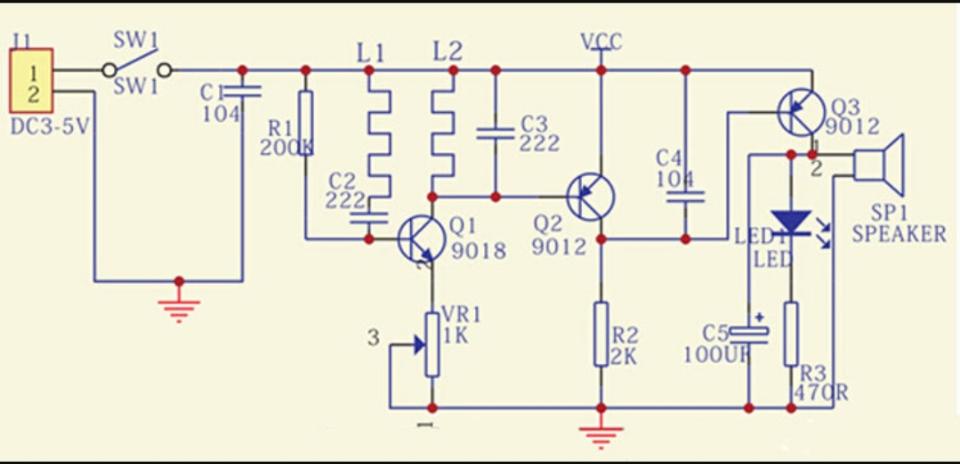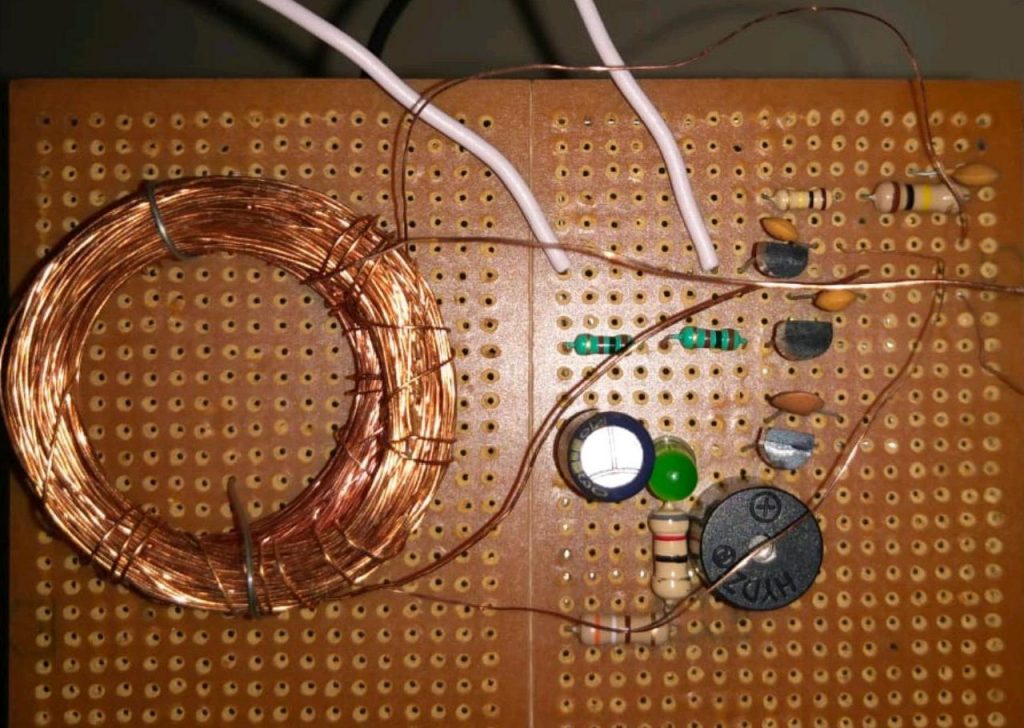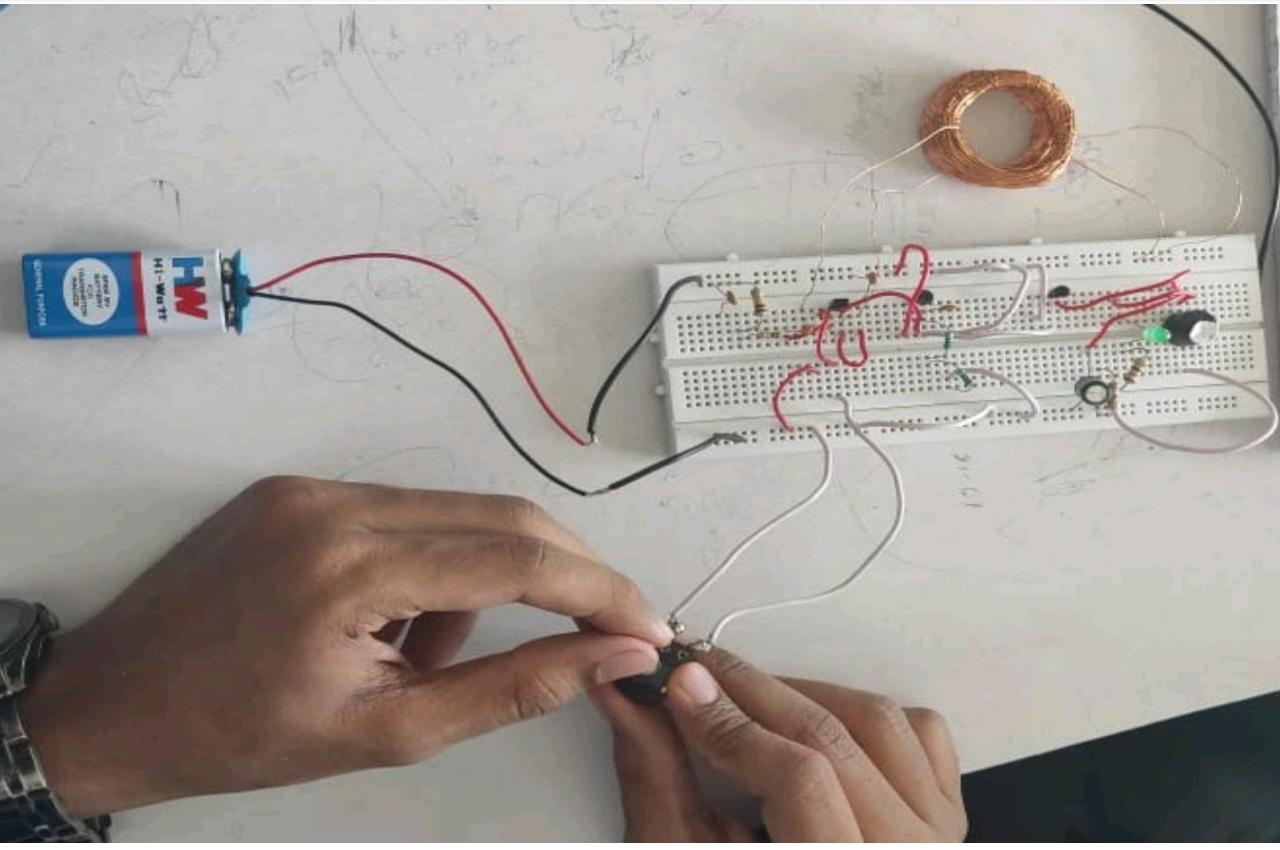Introduction:
A metal detector is a device that can detect metal which may not be seen directly. The simplest kind of metal detector can be made using an oscillator, two inductor coils, and a detector or indicator. Here we will talk about how does metal detector works its construction applications and the importance of metal detectors in our normal lives.
For a better understanding, you can watch this video.
Components required:
1- Transistor BC 547
2- Transistor S9012 × 2
3- Electrolytic capacitor100uf
4- Resistor200k
5- Resistor 2k
6- Resistor 470 ohm
7- Capacitor 104
8- Capacitor 222 × 2
9- 1k potentiometer
10- LED
11- BUZZER
12- Battery
13- Coil L1 & L2
Construction:
As shown in the circuit diagram the two transistors Q1 and Q2 form the oscillator circuit and the other transistor bc 547 forms indicator part the L2 coil act as a detector.
Circuit diagram:

Metal Detector Circuit on PCB

how does a metal detector works
Working principle:
The oscillator produces an alternating current this current when passes through the coil produce an alternating magnetic field. If a piece of metal is brought close to the coil eddy current is induced in the metal which leads to the changing magnetic field linked to the metal. This changing magnetic field can be detected using another coil.
Working of the metal detector circuit:-
1.] The oscillator circuit is provided dc source so that it can generate alternating current. To generate AC you can use a 555 timer ⏲️ and capacitor resistor combination.
2.] The alternating current is provided to the coil L1 which produces an alternating magnetic field. The Coil L1 and L2 are kept close together.
3.] when a metallic object is moved close to the coil eddy current is induced in the metal which produces a magnetic field linked to the metal.
4.] The secondary coil L2 which acts as a sensor experiences the magnetic field of metal and produces a current in it.
5.] This current is very small and needs to be amplified. After amplification, it is giving to the buzzer and LED which starts glowing when the metal is detected.
6.] There are two PNP Transistors which are used to generate AC signal. Another transistor bc 547 is used to amplify the output of secondary coil L2.
7.] The potentiometer is used to adjust the resistance.
Application of metal detectors :
Metal detectors were first developed in the 1960s for industrial and mining purposes.
- Industrial uses – Used by various industries to detect metallic objects.
- Airport security – to check peoples before allowing them to access the boarding area and the plane.
- Building security – checking peoples before entering a particular building, such as a school, office, or prison.
- Event security – testing whether a person is carrying dangerous thighs while entering a sporting event, concert, or other large gatherings of people.
- finding Items – to search a lost item, such as a piece of jewelry.
- Archaeological exploration – To find metallic items of historical significance.
- Geological research – For detecting the metallic composition of soil or rock formations.
Conclusion-:
After designing, simulating, assembling, soldering and testing the circuit,
we concluded that our circuit of the metal detector is
working satisfactorily and has a negligible amount of unexpected
functioning.


Apna college ka project sahi hai 🔥🔥🔥